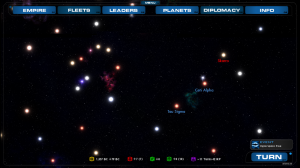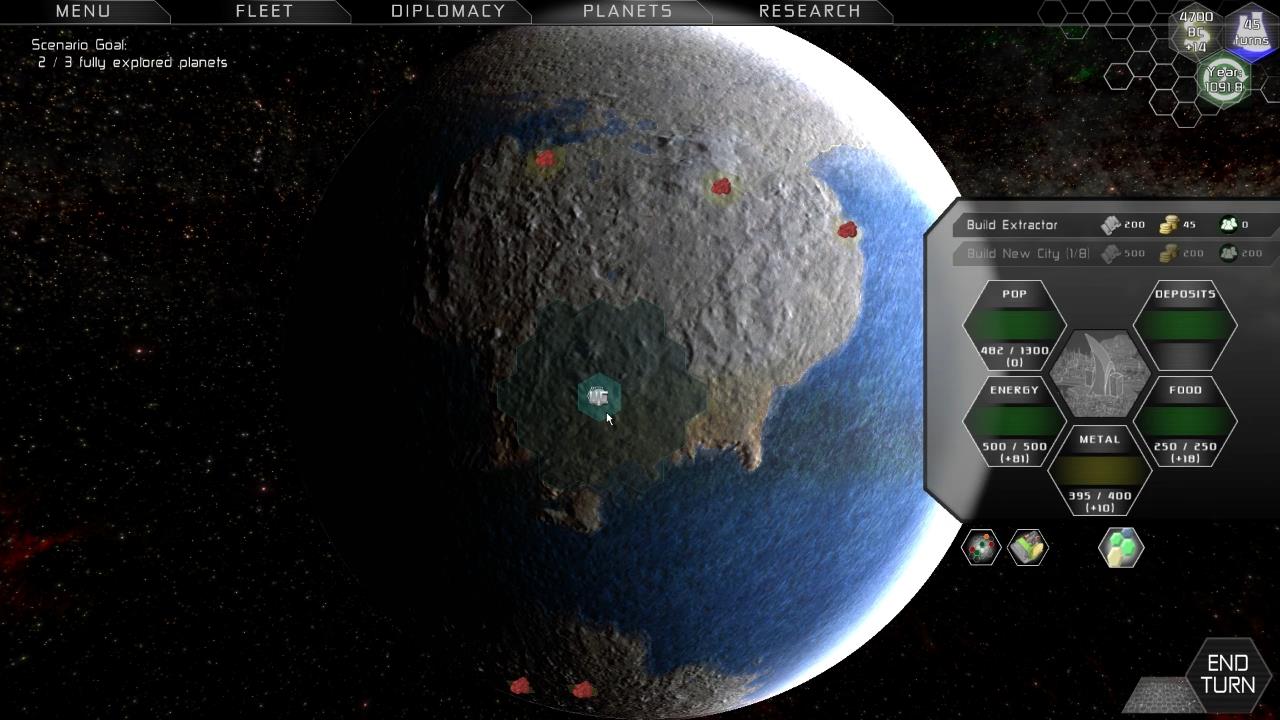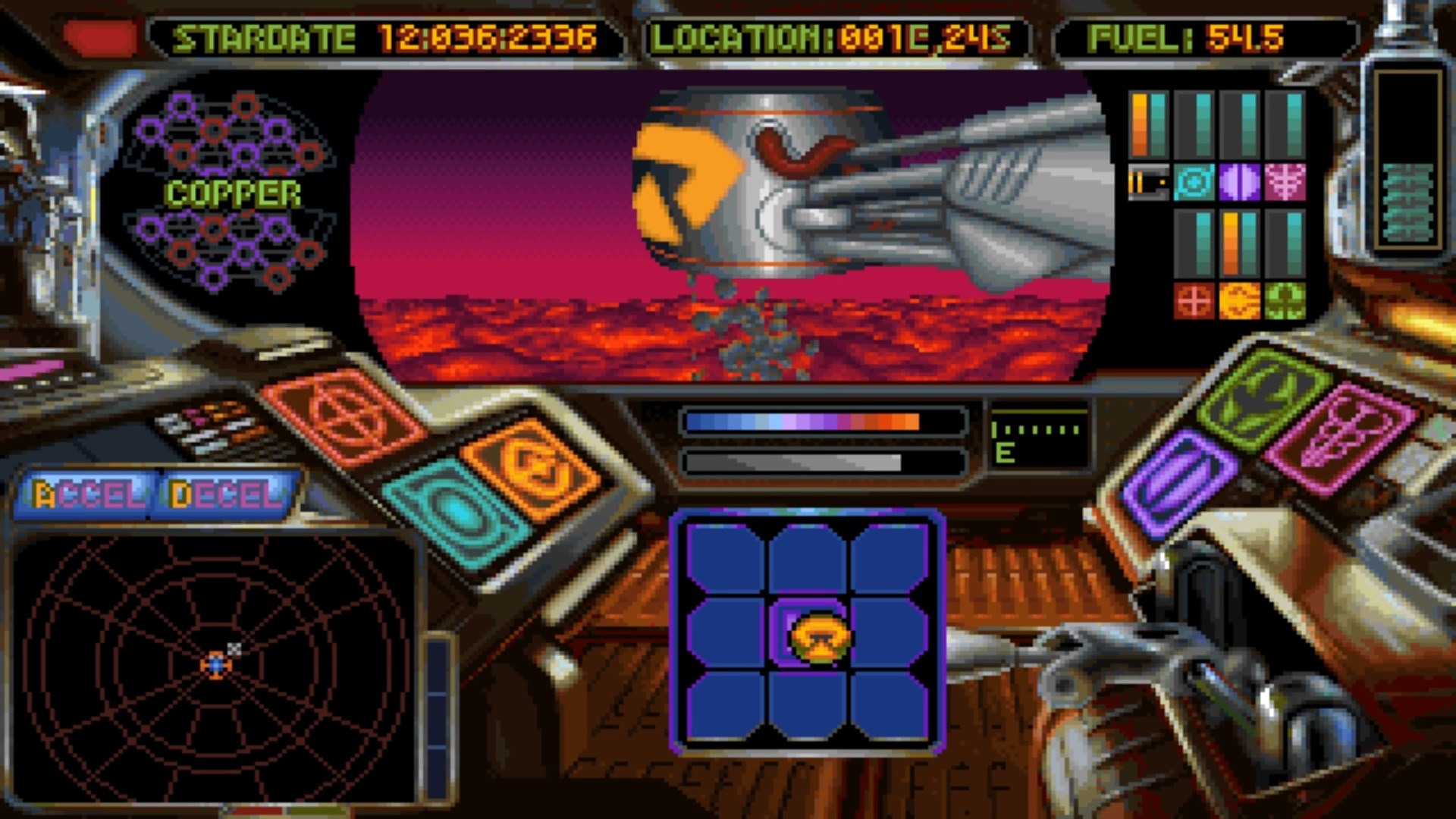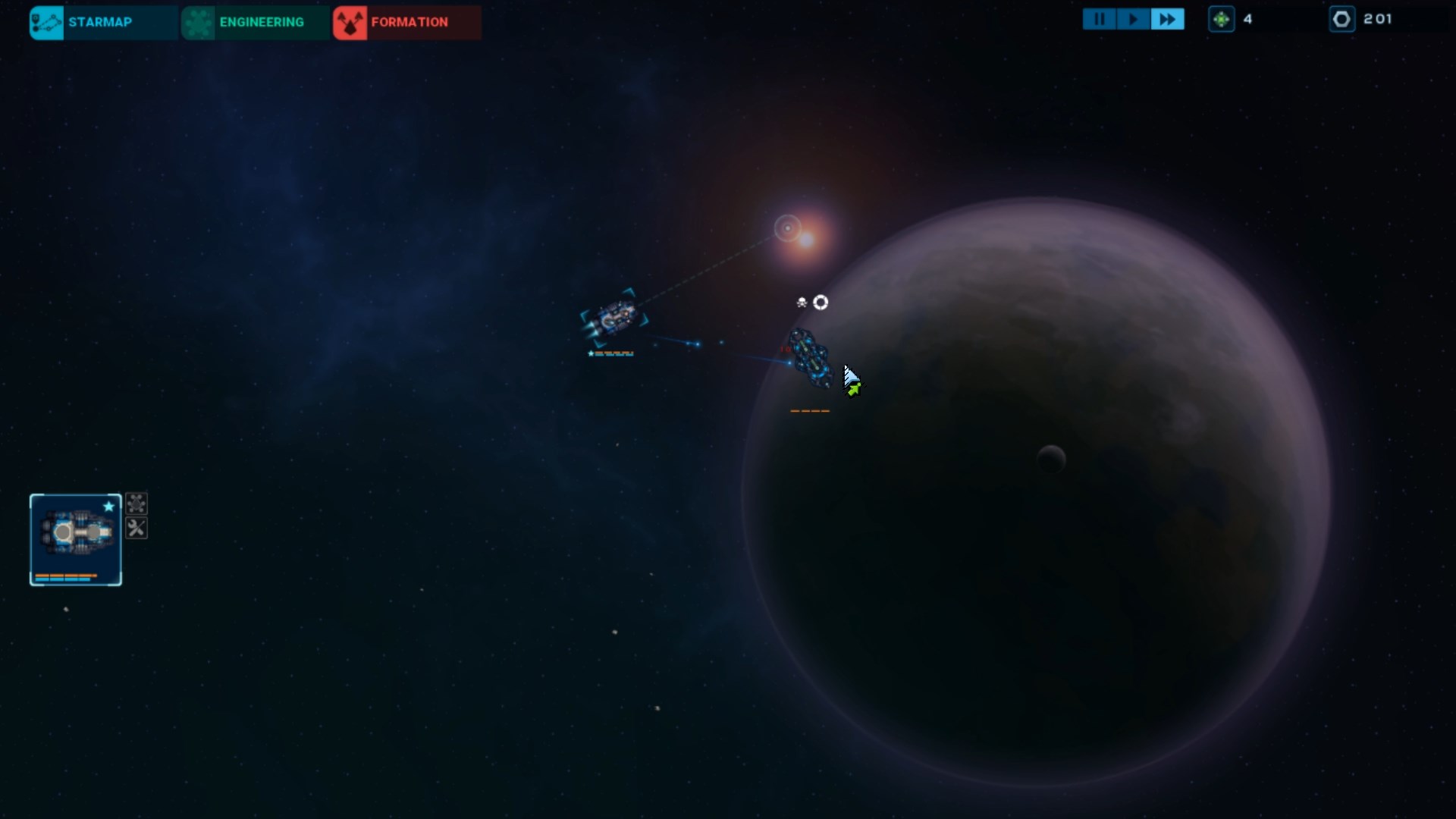
A little more than a week ago, I was contacted by the developer of a new spacey 4X called Lord of Rigel. This game aims to capture the splendor and grandeur of 4X games of old, such as Master of Orion 2, by giving the player plenty of choice as to how to play the game their way, including race customization, varied victory conditions and so on. After learning about the game a bit from its website, I had to know even more, so I offered to do a Q&A with the aforementioned developer, James Rorabaugh. After the cut you’ll find a pretty dang detailed Q&A, as James goes into quite a bit of loving detail about his project. It was damned enjoyable to read, so I hope you like it as much as I did. Thanks for reading! :)
Brian Rubin: Thanks for taking my questions! First off, when did you begin working on Lord of Rigel, and what was the main inspiration for the game.
James Rorabaugh: The concept of Lord of Rigel began in my living room around April 2014. We (my Rhombus Studios Co-Founder and I) began talking about recent 4x games that we were playing and what was out there. The main focus of the conversation was that so many 4x space games were getting things right, but ultimately nobody had really built a successor to Master of Orion 2 that was all around better, including Master of Orion 3. The different 4x games on the market over the past two decades have all emphasized different gameplay aspects (economy, diplomacy, or combat) but we felt that none of them have had the balance that Master of Orion had.
The key issue that we felt needed to be addressed in any successor to Master of Orion 2 was to avoid rewriting the book of Master of Orion 2 and instead to build on the successes of the game and improve on its weaknesses (i.e somewhat linear victory conditions, espionage, diplomacy). Many games, in attempting to rewrite the book of 4x space games, have broken a number of the mechanics that made Master of Orion 2 great and greatly enhanced the learning curve and accessibility of the game to less hardcore gamers. At the same time, there have been many advances when it comes to interfaces and usability that removes core problems of Master of Orion 2 such as micromanagement (AI management for colonies) or combat becoming tedious at the end of a game (auto-resolve options).
Additionally, I had recently purchased Civilization V and its expansion and loved some of the new mechanics that I had seen in it such as culture and happiness. It provided new avenues to victory that were satisfying. We thought that if we could blend some of these new ideas into Master of Orion 2 we could meet our main goal of enhancing Master of Orion 2 rather than rewriting the book on 4x space games. Our plan with Lord of Rigel is to be evolutionary, not revolutionary. What would a Master of Orion game look like today if it was like the Civilization series and had incremental sequels adding in modern game mechanics?
BR: Your website states that several recent games have missed providing the “complete space-opera strategy game experience.” How do you plan to cover that more successfully that other 4X games of late?
JR: Many recent strategy games have emphasized specific aspects over others. For instance Endless Space and Galactic Civilizations have emphasized game economics while Sword of the Stars focused on tactical combat. We’re trying to provide a balance of these different types of game mechanics so the game is enjoyable by different types of strategy gamers. Some like the economic and colony building side, while others may want to use building queues or AI management. Other players may want to focus on tactical combat and ship design while some may not find that their cup of tea. So we’re trying to provide something for everyone. In a similar vein, we’re placing more emphasis on diplomacy and spying mechanics than some other recent titles.
Part of “providing a space opera experience” is also making sure that each species has a unique character visually, and when it comes to how they interact with the player. A proud warrior species such as the Katraxi have different behavioral rules in diplomacy, on the strategic level, and in tactical combat. Of course this can sound like a tall promise in a pre-alpha, but decision trees are adjusted for different species to give a sense of their culture. For instance Humans are willing to be a bit more sneaky with flanking maneuvers and political backstabbing which is reflected in the decisions that the AI if playing a game against a Human would have. Compare this to our “warrior lizard species” the Tharrn, who are very aggressive and straight forward in tactics and diplomacy.
BR: When you mention that the game is “heavily based on scifi tropes played straight,” could you elaborate on what you mean by that, please?
JR: We’re basing Lord of Rigel on recurring themes in many of our favorite major scifi franchises from the 90s. Star Trek: Deep Space Nine and Babylon 5 are major influences. Many recent scifi games have made their back stories very humorous or attempt to subvert clichés in the genre. Instead, we want to honor the roots of scifi gaming. For instance, species such as the Katraxi are reminiscent of classic scifi species like Larry Niven’s Kzin and the Klingons. The roots of the Tharrn, another species in the game, deeply draw from the Gorn in Star Trek and the “Visitors” from V The Series.
BR: Can you please elaborate on the differences between strategic and tactical combat in your game? Does strategic mean auto resolve, for example, or is there something else going on?
JR: The short answer is that yes, it does mean auto-resolve, but I’ll give a breakdown of some differences between strategic and tactical. The strategic layer involves exploration, colony management, research, ship design, and construction. When two opposing fleets meet, players are presented with an auto-resolve option and a sense of the “balance of power” based on available information about the enemy fleet. This information can be flawed and incomplete if, for instance there’s a cloaked armada waiting as reinforcements. If a player decides to take control, they’ll be sent into tactical combat where they control ships in a turn based setting. Once fleets are handled there’s some strategic level options for planets such as bombardment or ground invasion (provided you have troop transports supporting a fleet). Just being in a hostile system also automatically sets up a blockade. Blockading and taking out the defenses of say a major farming world can economically cripple an empire without a single boot landing on a planet or dropping a single bomb and can provide considerable diplomatic leverage.
BR: Could you please elaborate on how we can customize our own species in the game, such as some example traits we’ll have available to us?
JR: There are many unique character traits that a player can choose from for a custom species. The three most interesting species traits are: Sapiophage, Exiles and Molten Homeworld. Sapiophage lets players assimilate worlds differently than a conventional race. First, they are unable to assimilate any species on worlds they conquer. Instead they eat that species and gain a 200% population growth rate and a 50% morale bonus. If no members of another species are present on a world they suffer a -50% population growth penalty from their insatiable hunger. They also have a -25% diplomacy penalty due to their reputation for eating diplomats. Sapiophage, due to its penalties, makes it difficult for the player to stand back and play it safe. Sapiophage should force the player to try and constantly expand and provide a new gameplay style compared to other species without this trait.
Exile species have no homeworld and begin the game with a substantial fleet to command with colony ships. This allows the player pick colonies that suit the players style. Additionally the player gain 10 points to choose towards other traits that may give them substantial advantages once they have established a colony. This trait was designed to give the player a unique way to begin that game that is risky but could potentially be very rewarding beyond the initial penalty of having no homeworld or economy.
Molten Homeworld will give players a different way to look at the galaxy. Species that come from molten worlds treat toxic worlds as normal and players can terraform any existing world into a toxic world in 5 turns which allows them to gain bonuses from those worlds at a substantially faster pace. Additionally it makes it harder for enemies who take over your colonies to gain the full benefit of those worlds because most likely they do not come from a toxic world and will receive substantial penalties when in control of it.
BR: What kinds of options will we have to set up the galaxy in which we’ll play in? Your site mentions minor species, for example. Will we be able to turn things like that on and off?
JR: Galaxy options include things such as size (how many stars), average star age (young, average, old) which controls planet type distribution, mineral richness, amount of anomalies (black holes, nebulas, wormholes), and shape (spiral and cluster). We do limit the upper size of galaxies to 1,000 stars for gameplay reasons. Even with AI managers and build queues it runs the limit of managing abilities having a galaxy that large even if divided over many factions. Some games have advertised even larger galaxies, and we could easily generate a galaxy with a million stars if we wanted to, but we feel that smaller galaxies of 250-500 stars are the most appropriate for gameplay. If players really feel like this isn’t enough, they’re welcome to go into the galaxy generation tables we’ll make available for modding and up the limits for their games!
Another option present is “Master of Rigel” mode where, if enabled, the cold war between the Rigelans and Arcturans isn’t present and the game is a clash between the major civilizations while fighting over the abandoned ancient Dyson sphere, Rigel, and its secrets.
Random events (including space monsters) can be turned on or off.
Minor species are tied to galaxy size since we believe they’re an integral part of the diplomacy system. Often minor species will be found on planets with key strategic resources for end-game techs so how a player deals with this issue can really shape a game. They would play a role similar to that of Civilization V’s city-states.
BR: Besides the other empires floating around out there, will there be any other types of NPC characters, like space monsters, pirates and so on? If so, could you please elaborate?
JR: Players can hire mercenary leaders, but leaders also get promoted from within your empire too. Leaders can gain skills and experience based on the tasks they do. We want to avoid the micromanagement of skill trees while still rewarding players for using and developing leaders. With some leaders, negative traits can be acquired in certain situations (being caught on the losing end of a battle or assigned to a planet that had low morale or food shortages).
As for space monsters, they’re a major part of space operas like Star Trek and Babylon 5. So monsters are going to have a role in Lord of Rigel. We’re taking a page from Sword of the Stars and also including game-changing grand menaces such as doomsday machines. Of course getting your empire wiped out early in a game from a space amoeba or a negative space wedgie isn’t fun so we’re being careful to tier random events and monsters to be appropriate for different stages of the game. We’ve all played games where uncompromising random events take out your homeworld on turn 10 and that’s a surefire way to ruin gameplay!
BR: Juggling a galactic empire is hard work, and with the wrong tools, it can be overwhelming or, even worse, boring. How much work has gone into the user interface in the game that helps us juggle all the various aspects on your empire, and can you elaborate on how it works?
JR: A lot of thought has been given to the UI and management systems in the game. As you rightly point out, handling a large galactic empire is hard work. In Lord of Rigel a player can have a galaxy with up to 1024 stars and each star has the potential for up to 10 orbits. So you could have a galaxy with over 10,000 worlds. Having an interface that is clean and accessible has been a key tenant when designing the game.
In Master of Orion 2 a player only needed a mouse to navigate the entire game. We have looked to take what Master of Orion 2 has done and refined it. Players will begin at the galactic view level and left click to get deeper into the game. Players can then right click to back out onto the galactic screen again.
In terms of GUI design we have taken design cues from the computer interfaces seen in 2001: A Space Odyssey and Star Trek II: The Wrath of Khan. Buttons are clean, simple in color and intuitively placed on the screen in terms of location and order. Additionally buttons have been given strong colors that make them stand out to the player when looking at the screen.
In terms of managing an empire we want to allow players some level of flexibility. Some players love micromanaging large empires and some prefer to macro manage their empire and worry about the big picture issues. To provide for both, players can choose to either micromanage each colony’s building allocation and population allocation or they can choose to utilize build queues that can be pre-built and then loaded once a player takes a colony. So if a player has a standard build sequence that they use for recently conquered colonies, rather than clicking up to 10 buildings each time they can simply define a build queue just once during the game, label it, and then load it as they see fit. It should make managing worlds far simpler and allow the player to focus on the bigger issues, but players still have the opportunity to focus on individual colonies if they choose.
BR: Are there any victory conditions available besides the typical flat-out conquest, and if so, could you elaborate on them please?
JR: With Lord of Rigel we’ve wanted to expand on the victory conditions commonly seen in 4x games to make them feel natural and not too “gamey.” Some recent games have had things such as score victories or taking over sufficient portions of the galaxy to help along pacing at the end game but we’ve felt this can seem a bit artificial. Similarly older games can drag on too long during the “cleanup” phase.
So to solve this, we drew inspiration from Babylon 5. The idea of two ancient species engaged in a cold war changes the dynamics quite a bit. So there’s a traditional military victory, and conditions tied to diplomacy where these species are trying to form political power blocs. So you can side with the Rigelans (the “Lords of Rigel”) an energy-based species that has their own plans for the future of the galaxy; or the Arcturans, a silicon based species who wants things to proceed “naturally.” Players can also decide that both of these races are wrong and try to form their own political alliance to rule the Galaxy. These different scenarios form the diplomatic endings. Failure to build strong alliances can result in a tense cold war becoming hot and weapons such as planet killers being commonly used.
Along with the diplomatic options and standard conquest is a research option where players discover the secrets of the elder species and attempt to ascend to another dimension. Doing this requires considerable resources, however.
BR: Your website details a little bit about the phased release plan you have for the game, but could you elaborate on your release plan and when we can expect to play the game?
JR: We’re still discussing our plans and they are subject to change. A lot of the timetable will be dependent on the success of our crowd funding efforts. Our first goal is to release our proof of concept demo, which will show off galaxy generation and tactical combat. We want to ensure that our backers receive a product and are engaged in development, and so one plan is to develop “Lord of Rigel: Tactics” which is our planned skirmish mode that lets you build ships and pit them against each other in tactical combat. This would also include the leader mechanics. Our plan would be to release new fleets, heroes, and tech levels as they’re finished for backers.
Following that would be a gameplay feature complete alpha where the game mechanics are present but with a limited selection of technologies and species. Our beta version of the game would follow and would be a feature-complete game where we take the time to polish gameplay balance and ensure that our AI is challenging. Our overall aim is to provide frequent updates and feedback with any backers or supporters since we want to be accountable to our community.
BR: Thanks for your time!!!
JR: Thank you and we appreciate a chance to talk about our project!








